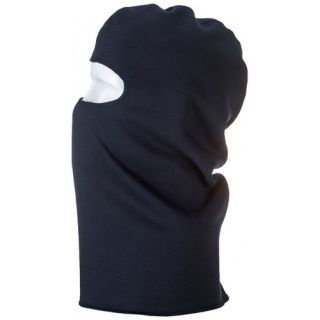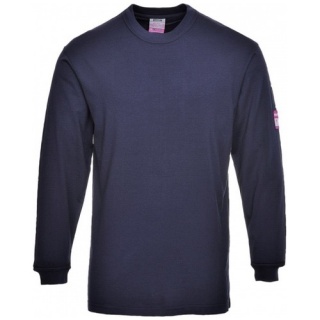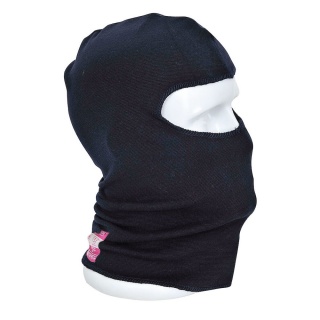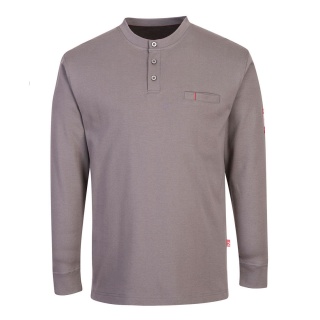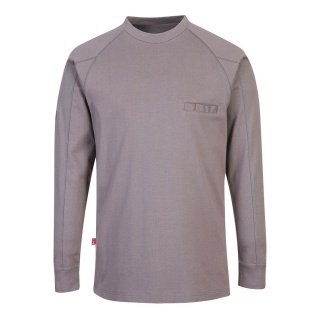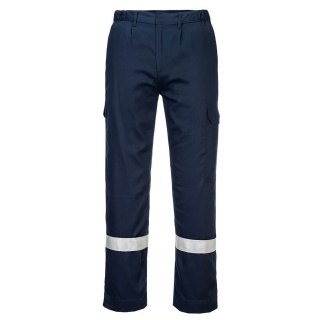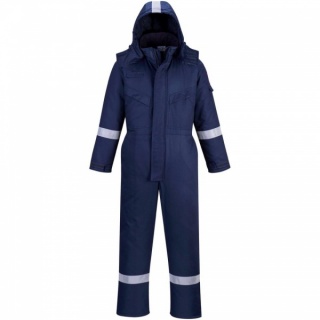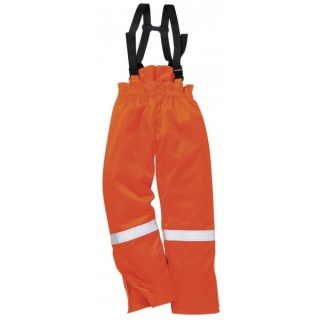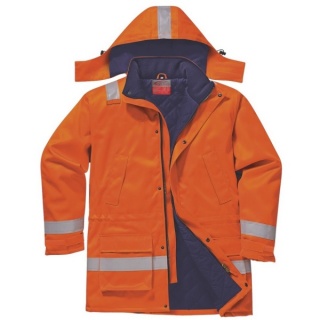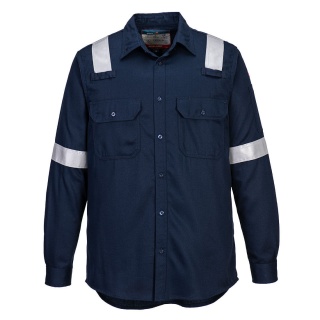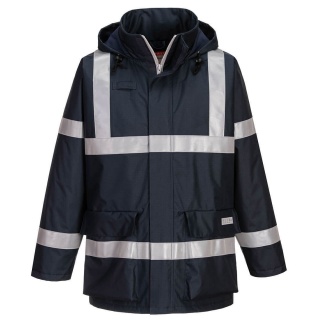Modaflame
Constructed from an inherently fire resistant yarn of 60% modacrylic, 39% cotton and 1% carbon fibre. Tested to exceed the required EN Standards, the Modaflame Knit range is strong, durable and highly inoovation. This fabric has the ability to withstand heat and flame and protect against the danger caused by static electricity and flame. These inherent flame resistant properties will not diminish with repeated washing.
Fabric:
 Modaflame Knit 300g
Modaflame Knit 300g
Features:
- CE certified
- Inherent flame resistant qualities will not diminish with washing
- Protection against radiant
- convective and contact heat
- ARC1 (previously HRC1)
- Anti-static
- 50+ UPF rated fabric to block 98% of UV rays
- High cotton content for superior comfort
Product Technical Information
EN ISO 11612:2008
Protective Clothing Against Heat and Flame
The Performance requirements set out in this international standard are applicable to garment, which could be worn for a wide range of end uses, where the is a need for clothing with limited flame spread properties and where the used can be exposed to radiant, convective or contact heat or molton metal splashes.
This test uses standard methods and conditions to predict the performance of fabric/garment in the event of contact with heat or flames. Garment features such as seams, closures and logos must be tested as well as the fabric. Tests must be carried out on pre=treated components according to the manufacturers care label.
Specific Testing is listed below:
- Dimensional Charge
- Limited Flame Spread (A1+A2)*
- Convective Heat (B) – 3 Levels
- Radiant Heat (C) - 4 Levels
- Molten Aluminium Splash (D) – 3 Levels
- Molten Iron Splash E - 3 Levels
- Contact Heat (F) – 3 Levels (Temp 250 Degrees Celcius)
- Heat Resistance at a temperature of 180 Degrees Celcius
- Tensile Strength Must meet a minimum of 300N
- Tear Strength must meet a minimum of 15N
- Bursting Strength
- Seam Strength
Garment Design requires that coverage must be provided from the neck to the wrist and to the ankles.
Optional Testing includes water vapour resistance and manikin testing for overall burn prediction.
*This test must be carried out on fabric and seams.
EN1149 -5
Protective Clothing against the Thermal Hazards of an Electric Arc
This European Standard is part of a series of standards for test methods and requirements for electrostatic properties of protective clothing. The standard specifies material and design requirements for garments used as part of a total earthed system, to avoid incendiary discharges. The requirements may not be sufficient in oxygen enriched flammable atmospheres. This standard is not applicable for protection against mains voltages.
EN 1149 consists of the following parts:
EN 1149-1: Test Method for measurement of surface resistivty.
EN 1149-2: Test Method for measurement of the electrical resistance through a material (Vertical resistance)
EN 1149-3: Test Methods for measurement of charge decay.
EN 1149-4: Garment Test (under development)
EN 1149-5: Material Performance and design requirements.
Electrostatics dissipative protective clothing shall be able to permanently cover all non-complying materials during normal use. Conductives parts (Zips, Buttons etc) are permitted provided they are cover by the outermost material when in use.
IEC 61482-2: 2009
Protective Clothing Against The Thermal Hazards of An Electric Arc
This standard specifies requirements and test methods applicable to materials and garments for protective clothing against the thermal effects of an electric arc event. An electric arc is a continuous electric discharge of high current between conductors generating very bright light and intensive heat.
Two international test methods have been developed to provide information on the resistance of clothing to the thermal effects of electric arcs. Each method gives different information. To comply with our standard either or both tests must be carried out.
Box Method EN 61482-1-2
The fabric/garment is exposed to an electric arc confined in a specific box with a specific electrode arrangement for 0.5 seconds. Class 1 is to the current of 4kA arc, Class 2 is to a current 7 kA arc. Test conditions for Class 1 and 2 try to stimulate typical exposure conditions for a short circuit current of 4kA and 7kA respectively.
Open Arc Method EN61482-1-1
This test method aims to establish the ATPV (Arc Thermal Performance Value) of Ebt (Energy Breakopen Threshold) of a fabric. The APTV is the amount of energy required to cause a 2nd degree burn through the material prior to breakopen (50% probability). The EBT is the amount of energy where the material breaks-open (50% probability). This is normally the upper thermal limit of the fabric where the fibres are damaged and material loses mechanical strength, Both APTV and Ebt are expressed in calories per cm2.
